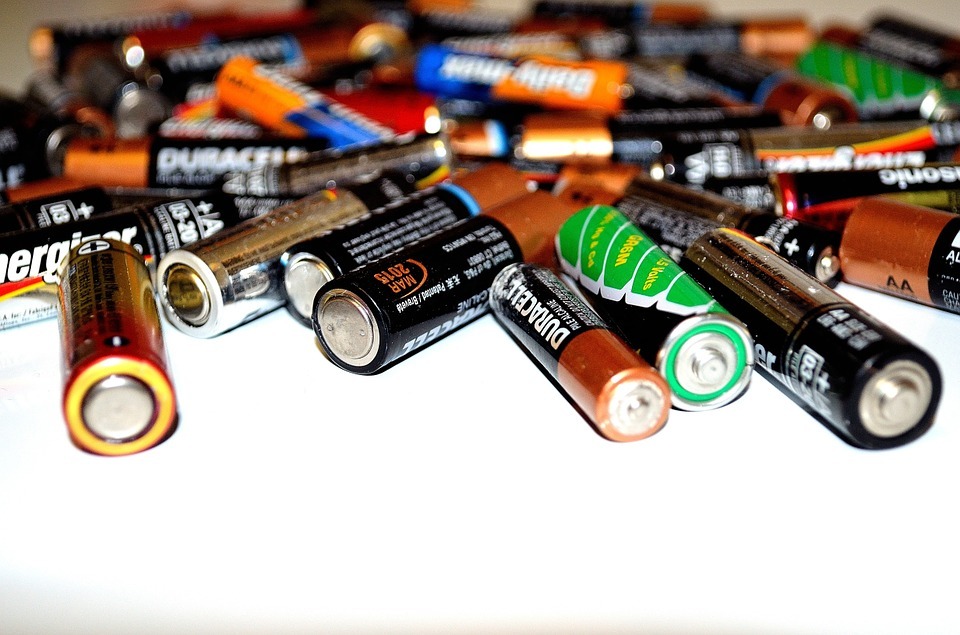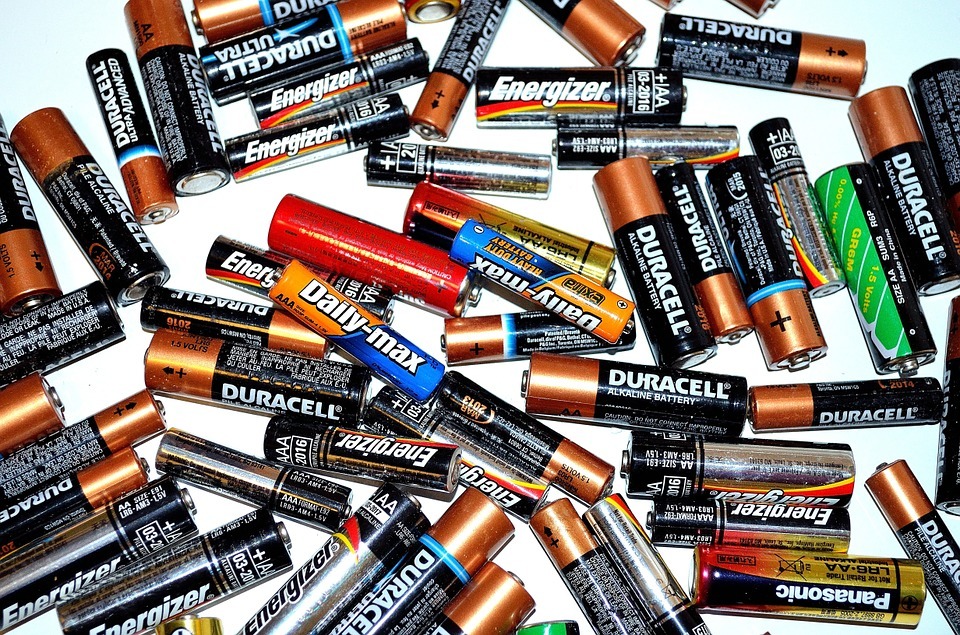Introduction
It’s common knowledge that batteries should be stored in cool and dry places, but how do we store different types of batteries for a long period of time? Most batteries should be stored at around room temperature or preferably 15°C/59°F, while extreme allowable temperature ranges from –40°C/-40°F to 50°C /122°F. Batteries with different chemical makeup require a different approach when storing them for extended periods of time and react differently to temperature and other variables.
Storing batteries properly not only helps minimize capacity loss but also keeps them ready-to-use when you need them. In all cases, heat is the number one enemy as it accelerates chemical decomposition and self-discharge. Let’s start with how to store different types of batteries for a long time.
Long-term Storage of Batteries
Primary/Non-rechargeable Cells
Since primary cells cannot be recharged, they need to be stored in a cool and dry place otherwise the capacity loss would be permanent. Many believe that refrigerating primary cells is the best method of storing them for a long time. However, you’d have to wait for them to come up to room temperature before they become usable. Moreover, refrigerating or freezing batteries can cause condensation, which usually results in corroded contacts.
Storing batteries in cold temperatures should slow down electrical activity in theory, but still, nothing can stop that activity completely. That’s why there isn’t much of a difference between storing primary batteries at room temperature or inside a refrigerator.
Some batteries are specifically designed to be stored for years so it’s better to go for such batteries instead of buying and storing cheap primary batteries. Most alkaline-based batteries have a shelf life of 5-10 years, while carbon-zinc batteries can be stored for 3-5 years. Primary cells should ideally be stored in moisture-proof containers or in their original packaging.
Lithium-Based
Lithium-based batteries should be stored at around 40% charge so they have plenty of juice they can use when self-discharging during long term storage. Some lithium batteries can be stored for up to ten years without losing too much capacity. The important thing here is to avoid storing a lithium battery in a discharged/near discharged state otherwise it’ll enter sleep mode (won’t work as it should when needed).
Although most Lithium batteries can be stored in temperatures ranging from -20°C/-4°F to 60°C/140°F, for prolonged storage 15°C/60°F is the ideal temperature. Li-ion batteries stored for more than a week at a level below 2 Volt per cell should be discarded.
Lead Acid
Lead Acid batteries can be stored for up to two years and should always be stored at full charge. That’s why you need to keep checking the voltage as they self-discharge over time. You’d want to top-up lead acid batteries from time to time, preferably once the charging level falls below 70%. The ideal temperature for maximizing their shelf life is 10°C/50°F or less, but not freezing temperatures.
Storing lead-acid batteries in a discharged state allows lead sulfate (aka sulfation, formed when batteries discharge) to turn into large crystals. It’s very difficult for the charging process to convert these crystals back into sulphuric acid and lead, resulting in a permanent capacity loss.
It’s also recommended to top up these batteries at a very low current level to prevent any damage when storing for a long time. It’s better to avoid charging using a power supply incapable of limiting the current otherwise it may cause sulfation (oxidation layer on the electrodes).
Nickel-based (NiZn, NiCd, NiMH)
You can safely store Nickel batteries in a fully discharged state, but it’s better to top them up a little before storing them. This allows you to quickly prime them when you want to use them later on. Nickel Metal Hydride batteries can be stored for 3-5 years with a recoverable capacity loss, while same is true for NiCd (Nickel Cadmium) batteries. Priming is required when the battery voltage drops below 1 volt per cell.
General Tips for Long Term Storage of Batteries
Keep in Original Packing
Most batteries come sealed in packaging, which provides protection against different environmental factors like moisture. If possible and you don’t plan on using them for an extended period of time, batteries should be kept in their original packaging. Keeping them packed also help you differentiate new batteries from the old ones and prevents their terminals from contacting each other or metals.
Store New and Old Batteries Separately
Leakage and other damage are possible if you use or store batteries together made by different manufacturers or having different specifications. Batteries, especially new and old non-rechargeable or disposable ones should not be stored together.
Use separate containers for each type, which also makes it easier to find the appropriate ones when needed. Even if you don’t plan on using a container or only have one or two, use small plastic bags to store each type and label them so you can easily find the ones you need later on.
Temperature
Heat can adversely affect storage capacity and chemistry of batteries. Batteries should be stored in a cool and dry place, away from direct sunlight. Nickel-based batteries should not be stored at low temperatures as they quickly lose charge. Most NiMH batteries are Low Self-Discharge and can maintain the charge at around room temperature.
Humidity
A vapor-proof container helps protect batteries from humidity and moisture, especially if you are living in a high-humidity region. Containers act as a shield and significantly reduce the risk of condensation. It’s safe to store Alkaline batteries in moderate humidity (35-65%), but most other chemistries might need drier environments for long-term storage.
Electrical Conduction
Batteries can conduct electricity and drain quickly if contacted with metal. This also creates a risk of electrical short or in some cases leakage. Batteries should never be stored in a metal container instead, a plastic container or battery storage box should be used.
No metal objects such as coins should be stored in the same container, while battery should be aligned such that +ive terminals cannot contact -ive terminals. It’s better to cover the terminals with plastic caps or masking tape to prevent electrical conduction during long-term storage.
Periodic Recharging
Lead-acid batteries have to be stored in a fully charged state. You’d have to top them off whenever the voltage drops below 2.07V/cell or 12.42V in case of a 12V battery. Depending on the type and capacity, a top up might be needed every six months. The voltage of a Li-ion battery should also not drop below 2.5V/cell and it might need some charge after a few months. Li-ion batteries should not be charged once the voltage drops to or below 1.5V/cell (copper structures may develop, causing the battery to short or even explode).
Restoring Rechargeable Batteries
Batteries need special treatment if their charge levels drop below the recommended levels (and stored for around a week is that state). Lead-acid batteries can be recharged and restored in most cases but at the expense of permanently reduced capacity. Small lead-acid batteries that refuse to recharge can be restored by applying a high voltage and very low current (for around two hours).
Li-ion batteries usually enter a sleep mode when kept discharged after which they might not charge normally. As mentioned earlier, never attempt to recharge a Li-ion battery that falls to or below 1.5V/cell level as the damage has already been done. To restore other Li-ion batteries that have entered the sleep mode, use a charger that can boost the charge rate while ensuring correct polarity.
Restoring Nickel-based is pretty straight forward in most cases as they can return to full capacity after a few charge/discharge cycles. However, some priming may be needed before you can start using these batteries (NiMH, NiCd, NiZn).
Summary
- All type of batteries should be stored in a cool and dry place at room temperature or below
- Lead-acid batteries should be stored fully charged, topped up when needed
- Lithium-based batteries should be stored at a 40% charged state (or between 30-50%)
- Keep batteries in their original packing whenever possible
- Separate batteries by manufacturer, type, and specifications, avoid mixing new and used batteries
- Nickel-based batteries can be stored fully discharged, but priming might be needed before using them
- Storing batteries in a refrigerator or freezer does not make a big difference, can also cause condensation
- Nickel-based batteries quickly lose the charging capacity at low temperatures
- Keeping batteries in a moisture-proof container is recommended, especially if you are living in a hot and humid region
- Avoid placing batteries with coins/metals or inside a metal container
- Cover battery terminals with plastic caps or masking tape to ensure positive terminals do not come in contact with negative terminals
- Li-ion batteries below the 1.5V/cell level should never be recharged
Conclusion
Proper storage of batteries not only extends their life span, but also helps you find them when needed. Batteries can become a safety hazard if stored improperly and can potentially cause fire. The volatile nature of batteries demands special care, especially when storing them for extended period of time. Storing them in a cool and dry place, ideally in separate plastic containers, can greatly help minimize loss of storage capacity so you can juice them up as usual when their hibernation period is over.


